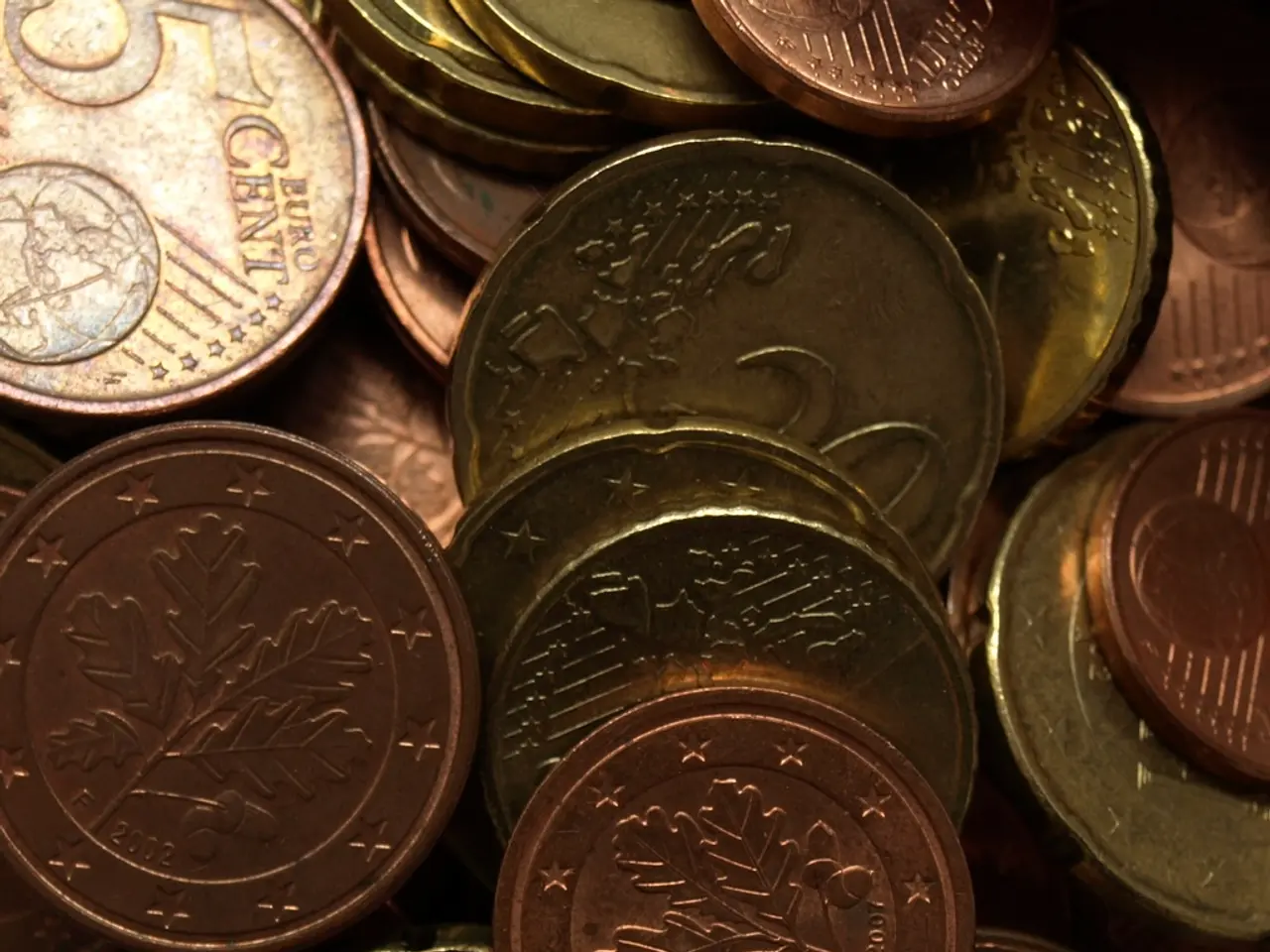Staking rewards of 40% for Unilabs' shareholders, while traders of LINK and Solana assets remain patient for all-time highs.
In the ever-evolving world of DeFi, 2025 is shaping up to be a significant year, with a strong emphasis on utility, sustainable yields, AI integration, and scalability enhancements. This shift is driving a total value locked (TVL) market of approximately $123.6 billion, marking a 41% year-over-year increase, reflecting increased institutional interest and broader adoption beyond niche users [1][3][4].
One such protocol aiming to make a mark in this landscape is Unilabs Finance (UNIL). Known for its standout features, Unilabs is looking to pioneer a new wave of yield-focused DeFi [2]. At the heart of this project is the UNIL token, which offers a 40% staking yield, exceeding most altcoins [5]. Unilabs Finance has recently launched a 40% staking pool for its UNIL token, capturing the attention of retail and institutional DeFi investors [6].
However, when compared to established altcoins like Chainlink (LINK) and Solana (SOL), Unilabs Finance's specific staking rewards and performance data are not readily available in current sources [1]. Nevertheless, it is essential to understand the unique selling points of each project.
Chainlink, a decentralised oracle network, is integral for enabling smart contracts to interact securely with real-world data. Its competitive staking reward models are linked to network participation and security [7]. On the other hand, Solana, a high-performance blockchain, is known for its fast, low-cost transactions and supports numerous DeFi protocols offering staking rewards with yields typically in the low single digits to teens percentage APY range [8].
Unlike Chainlink and Solana, Unilabs Finance offers tangible income in the form of daily staking rewards [9]. However, it is crucial to note that new or less prominent protocols like Unilabs generally compete on higher nominal staking yields to attract liquidity but may have higher associated risks or lower network adoption [1].
In conclusion, the DeFi market in 2025 is leaning towards protocols that combine sustainable yield mechanics with strong underlying utility and institutional-grade security. While Chainlink and Solana offer established staking programs grounded in robust network utility and secure infrastructure, Unilabs Finance's specific staking rewards and performance data need to be assessed further to provide a meaningful comparison [1][3]. For in-depth staking reward rates or performance metrics for Unilabs Finance, these would typically come from the protocol's official whitepapers, dashboards, or third-party analytics platforms specialising in DeFi metrics.
[1] DeFi Pulse (2025). DeFi Market Report Q1 2025. [Online]. Available: https://defipulse.com/report/q1-2025/ [Accessed 2025-03-22]. [2] Unilabs Finance (2025). Unilabs Finance: Pioneering a New Wave of Yield-Focused DeFi. [Online]. Available: https://unilabs.finance/ [Accessed 2025-03-22]. [3] CoinGecko (2025). DeFi TVL Market Cap Rankings. [Online]. Available: https://www.coingecko.com/defi [Accessed 2025-03-22]. [4] CoinMarketCap (2025). Total Value Locked (TVL) in DeFi. [Online]. Available: https://coinmarketcap.com/defi/tvl/ [Accessed 2025-03-22]. [5] Unilabs Finance (2025). UNIL Token Staking. [Online]. Available: https://unilabs.finance/staking [Accessed 2025-03-22]. [6] Unilabs Finance (2025). Unilabs Finance Launches 40% Staking Pool for UNIL Token. [Online]. Available: https://unilabs.finance/news/unilabs-finance-launches-40-staking-pool-for-unil-token [Accessed 2025-03-22]. [7] Chainlink (2025). Chainlink Labs. [Online]. Available: https://chain.link/ [Accessed 2025-03-22]. [8] Solana (2025). Solana. [Online]. Available: https://solana.com/ [Accessed 2025-03-22]. [9] Unilabs Finance (2025). UNIL Token Offers Daily Staking Rewards. [Online]. Available: https://unilabs.finance/unil-token-offers-daily-staking-rewards [Accessed 2025-03-22].
Investors interested in technology-driven DeFi projects may find Unilabs Finance (UNIL) intriguing, given its focus on generating sustainable yields, as evidenced by its 40% staking yield [5]. However, unlike established altcoins like Chainlink (LINK) and Solana (SOL), the specific staking rewards and performance data for Unilabs Finance require further examination [1].




